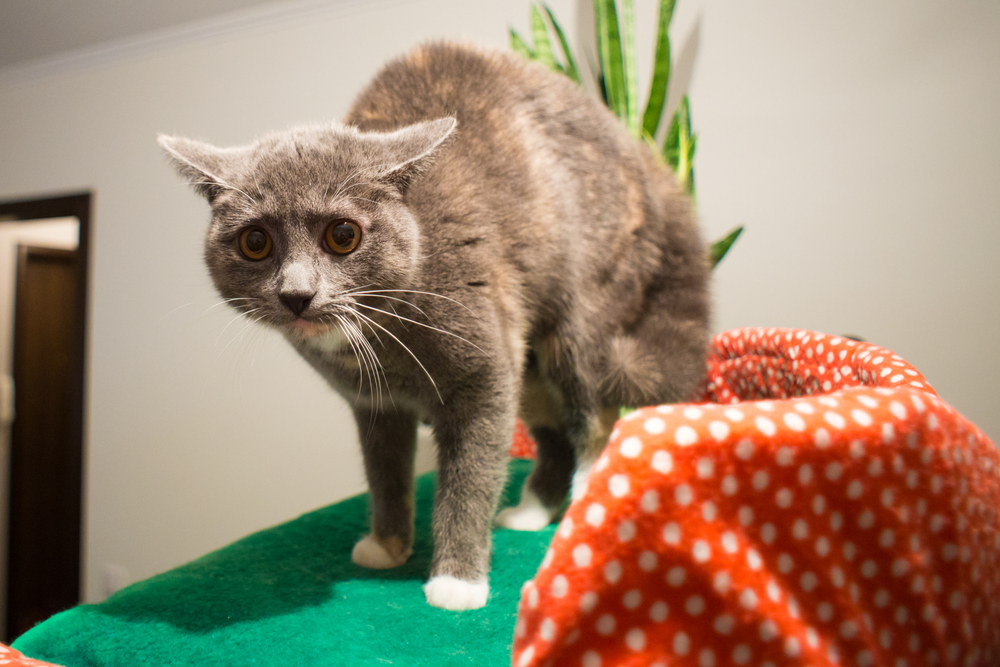As children, we all wished we could be Dr. Dolittle and speak to our childhood pets. Now, as veterinary professionals, that dream hasn’t changed, although we’ve been able to pick up on some subtle body language cues from cats and dogs to help overcome the communication barrier. To help you become a Dr. Dolittle and understand what your furry pal is trying to tell you, we’re sharing tips on reading your pet’s body language. Pets communicate more through silent body signals than barks or meows, so learning their language is essential for understanding them.
What is my dog trying to tell me?
While your pooch may bark once or twice to inform you dinner is late, or that pesky squirrel is in the yard again, they communicate primarily through changes in body posture. When looking at your pet, take into account the situation and environment to get a full picture of what they’re trying to say, because checking only their ears or tail can be deceiving.
- Ears — A happy, confident dog will perk up their ears and face the object of their interest, while an anxious or scared dog will lower their ears and turn back. An aggressive dog’s ears are typically pinned flat to their head.
- Eyes — A content dog will have soft, almond-shaped eyes shaped by their gentle smile. However, if the dog becomes nervous, the eyes will widen, and you may see the whites of their eyes (i.e., whale eye). You may see their eyes begin to narrow as fear turns to aggression.
- Mouth — A relaxed dog may have a slightly open mouth or a smile, while a nervous one will have a tight mouth. Calming signals in an anxious dog include tongue flicking, lip licking, and yawning. As fear turns to offensive or defensive aggression, you will likely see bared teeth.
- Tail — A happy dog’s tail will loosely wag, sway gently, or hang in a relaxed position, and then move more quickly as their excitement mounts. A nervous dog will generally keep their tail tucked, while an aggressive dog may hold their straight tail up high or wag in short, stiff movements.
What is my cat trying to tell me?
Feline body language can be more difficult to decipher, as cats are naturally more secretive than dogs. But, it’s certainly easy to tell when a cat is startled, scared, or upset. Like dogs, cats may meow at their owners for attention or food, but they typically do not meow at other cats. To understand what your cat is trying to say, look at their overall body language and their situation.

- Ears — Upright and forward-facing ears are a sign of a happy, curious cat, but if their ears turn sideways and back, watch out, because they are uncomfortable, and may lash out if pushed too far. If the situation escalates, the cat will pin their ears flat against the head.
- Eyes — Cats communicate a great deal with their eyes. Dilated pupils can indicate a cat is alert, nervous, or surprised, while constricted pupils can be a sign of a tense or agitated cat. A hard stare should be taken as a challenge, especially when paired with constricted pupils. On the other hand, a slow blink shows that your cat is comfortable around you and trusts you. The eyes will often already be half-closed during a slow blink, which is another sign of relaxation.
- Tail — A cat whose tail is upright, often in an upside-down question mark shape, is a happy cat. However, a cat who becomes unsure about their situation may lower and slowly wave their tail back and forth. As the cat becomes more agitated, the tail will twitch faster, which is a sign to back off. A puffed-up tail is a clear warning to leave the cat alone.
Are you struggling to understand what your pet is trying to communicate? Maybe they’re in pain, nauseous, or experiencing some other medical problem. If your furry pal is trying to tell you something, bring them to the professionals at Acorn Animal Hospital. Give us a call to schedule an appointment.
